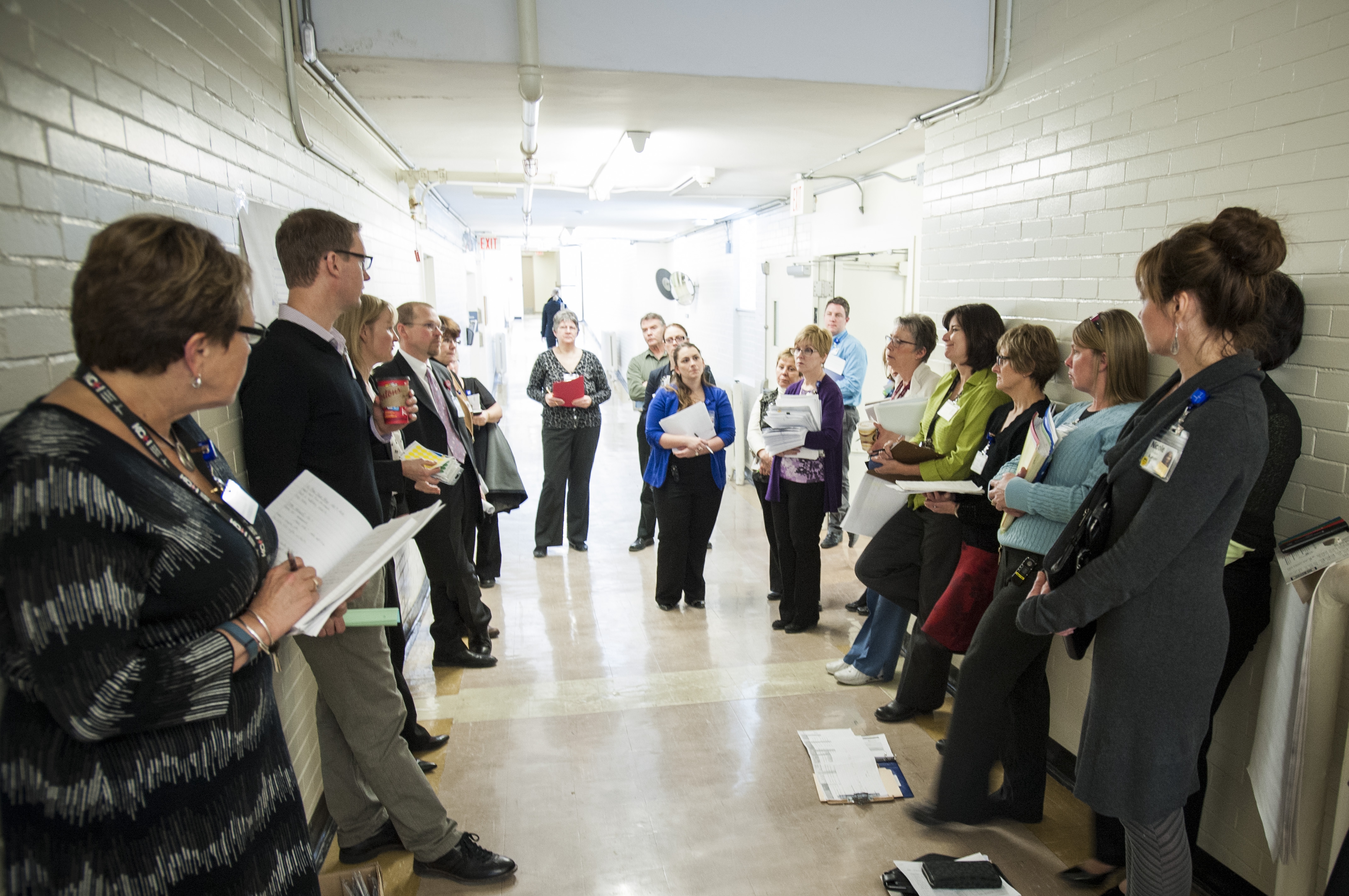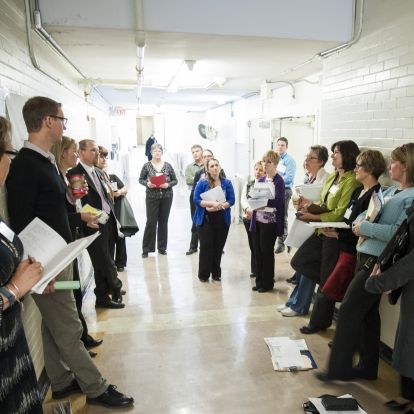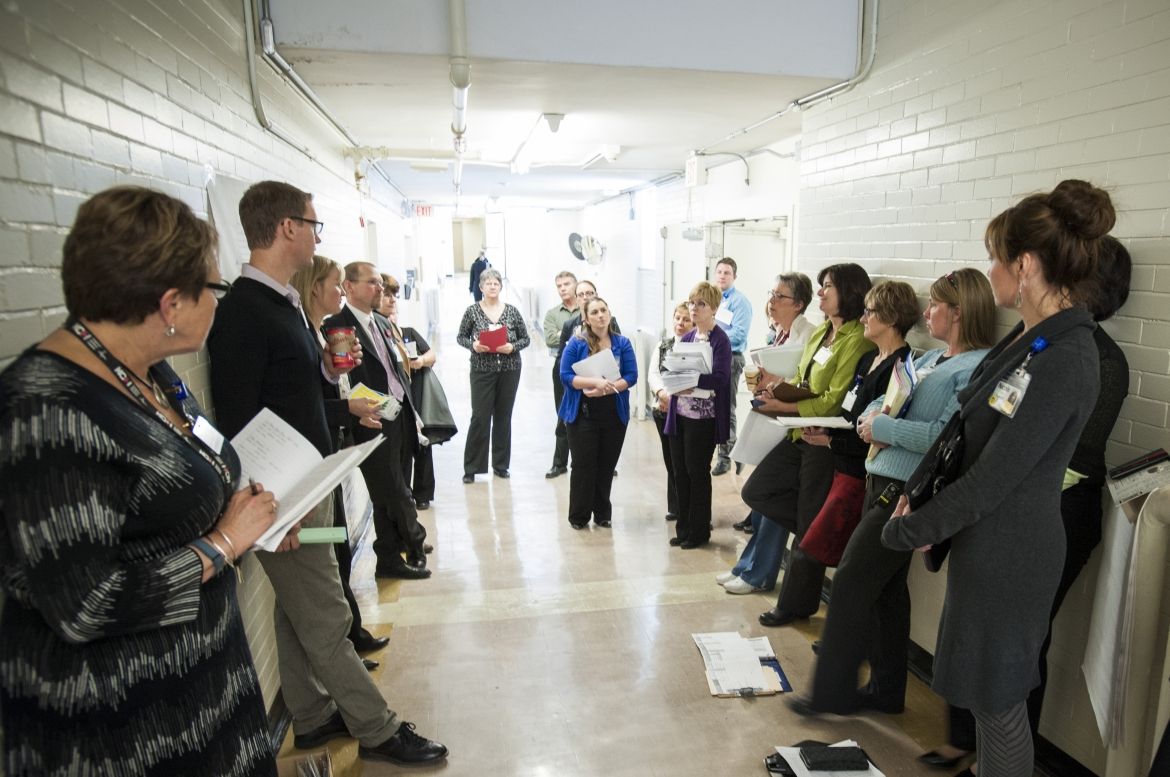
You may have noticed huddles in our halls, or heard the term ‘GOOG’ being used around the building lately. It’s all part of KGH’s renewed efforts to improve patient flow and end our current code gridlock by the end of March.
When Kingston General Hospital launched its ‘Get out of Gridlock’ project two weeks ago, the organization began looking at 11 improvement cycles to help patient flow. Since then, the hospital has narrowed its focus on four key areas. They are:
- The number of patients being discharged by noon
- The number of patient discharge summaries completed the day before discharge
- The number of efficient patient handovers completed when patients move between units (completed in the first attempt, e.g., one phone call)
- Greater focus on interprofessional rounds to help plan for discharge
“It took some work to narrow down our focus, but it’s been a worthwhile effort to break it down into more bite size pieces,” says Richard Jewitt, Program Operational Director of Medicine and Mental Health. “This will allow us to really hone in on these areas and work to sustain our progress.”
Auditors will also be measuring the four areas to track the flow of patients from when discharge planning begins, to when the patient actually leaves the hospital. The auditors will be looking at Kidd 3, 6, 7 and 9 at first to get a better idea of how the hospital is performing. Initially, the work is already having some impact on the patient floors.
“We’re seeing a quicker response time with nursing handover and the use of flex beds on each unit which allows for timelier admissions. Unfortunately, the volume of admissions is still larger than the patients being discharged,” says Tyler Hands, Program Manager of Inpatient Oncology.
To see success over the long term the project must also address some of the deeper issues that haven’t previously been tackled.
“As a hospital, we’ve gotten better at dealing with gridlock and making changes to improve patient flow, but we feel this latest project will help address some of the root causes of gridlock at KGH,” says Kellie Kitchen, Program Operational Director of the SPA and Maternal Child Programs.
Communication between units and programs has already been identified as one of those root causes.
“In the past, each Clinical Program has held their own improvement cycles to address patient flow, but what we are learning now is that sometimes the efforts broke down between programs,” says Kitchen. “This time we are really looking at how we can work together to improve flow between programs and units.”
To do that, leaders and staff from across the organization are holding a huddle at 10 a.m. and 2 p.m. every day in the Connell 2 hallway. The team reviews the data from the previous day and plans for potential discharges and patient moves for the following day.
“By holding these huddles we are now identifying and communicating barriers to flow and holding each other accountable to follow-up on the barriers,” says Hands.
This work will continue to be a focus moving forward as managers and directors have seen significant parts of their schedules cleared until the end of March to deal with this issue.
Gallery


Daily huddles by managers and other staff are a key part of our ‘Get Out Of Gridlock’ efforts.



